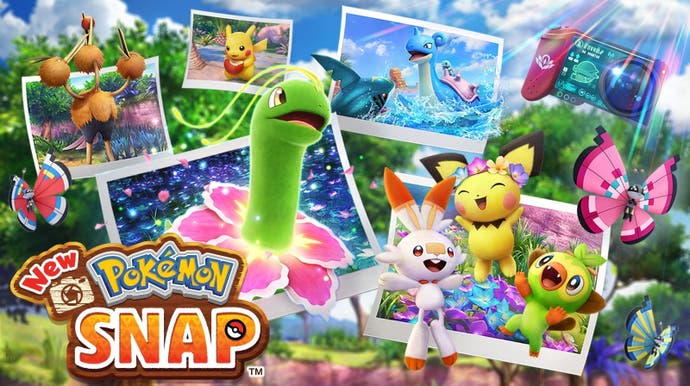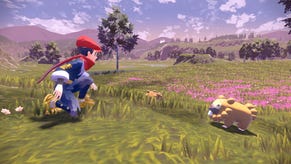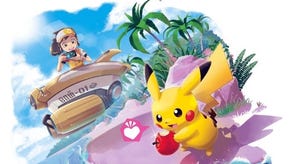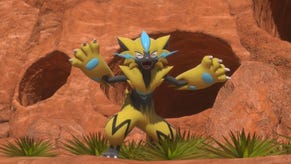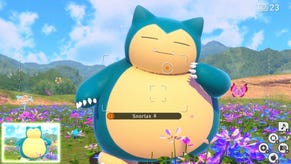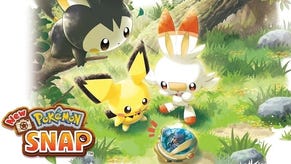New Pok¨Śmon Snap review - a charming return to an odd idea
Why isn't it called Pok¨Śmon Snap 2?
I've journeyed through the Founja Jungle so many times the location of the Pokémon have been embedded in my brain; I know where the Beautifly flutter, the Arbok slither and where the Quagsire wallow in the swamp. My current quest is to snap a picture of a Pikipek, the Pokémon equivalent of a woodpecker, drilling away at a tree. I position my camera carefully and, when I round the corner, take a flurry of photographs. Sadly, despite my preparation, I'm a second too late and Pikipek has already taken flight. This isn't the last it's seen of me though - I want that photograph for my Photodex and I'll get it one way or another.
Pokémon photography fans have waited 22 years for New Pokémon Snap to arrive. Its predecessor, Pokémon Snap, was originally released on the Nintendo 64 and, with its conclusion involving throwing apples at Mew in space, helped start the tradition of Pokémon spin-offs being rather strange. Since its release, we've seen all kinds of Pokémon spin-off games, from investigating mysteries with Pikachu to watching television with Pikachu and even, for some reason, two PokéPark games, but none have captured the unusual, yet compelling, magic Pokémon Snap had. Especially the PokéPark games. The challenge facing New Pokémon Snap is whether it can recreate this sensation without becoming an imitation of the original game.
On the surface, New Pokémon Snap remains unchanged from the original; your goal is to take the best pictures possible across a variety of courses, from the Lental region's nature park to tropical beaches. Each one is explored rail-shooter style and, despite sounding restrictive, it grants you the freedom to focus on taking pictures or uncovering secrets, such as alternative routes. Every location is filled with Pokémon roaming the land, skies or waters, making it near impossible to capture them all on camera in a single visit. It's easy to miss a creature simply because you're facing the wrong direction or need to line up your shot in preparation for their appearance. You'll find yourself revisiting courses to investigate what's occurring behind your pod or to capture the activities of a sole Pokémon.
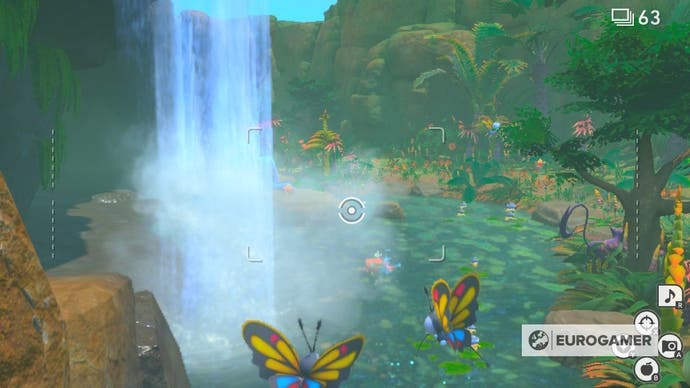
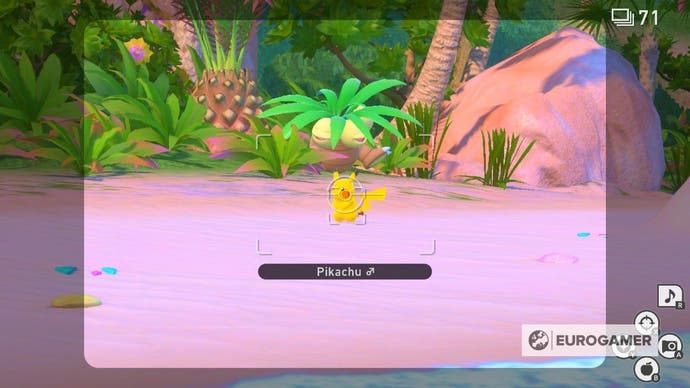
New Pokémon Snap deepens this loop, preventing it from becoming too repetitive, by giving each course a number of Research Levels. These determine which Pokémon appear and where, with certain Pokémon only showing up on specific Research Levels or behaving differently. Some courses can also be explored during the night, which, again, leads you to finding a new selection of Pokémon. Sylveon, for example, is absent from Florio Nature Park during the day, but can be easily found once night falls. Both the Research Levels and night-time courses help maintain a sense of discovery, which ensures returning to these courses, even as you progress further, is enjoyable.
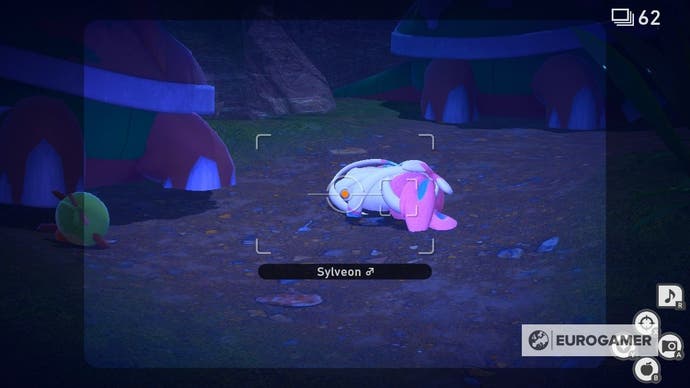
Research Levels, including many of the courses, are unlocked by reaching a specific amount of Expedition Points, which, in turn, are earned from your photo evaluations given at the end of each course run. Expedition Points are tallied from six evaluation factors, such as which direction the subject of your photo is facing and whether it's placed in the centre of the photograph. Fulfilling all of these factors in a single photograph takes practice, but, as you become more familiar with a course, you'll learn where the best photo opportunities are and, often more importantly, when the time's right to snap a picture. It's very rewarding to finally receive a diamond rating on a photo which has taken you multiple runs to perfectly position.
Aside from Expedition Points, you also need to be aware of which star category your photo falls under. Categories range from one to four stars and are determined by the behaviour the Pokémon in the photo exhibits; a photograph of a Pokémon eating or sleeping, for example, will have a higher star category than one standing still. Since each Pokémon can have one picture for each category placed in its Photodex entry, you're encouraged to cover a range of different behaviours, rather than simply focusing on taking four star pictures. It's the closest you'll feel to being an actual nature photographer in New Pokémon Snap, as you analyse the different behaviours of each Pokémon to decide which ones are more unique or unusual.
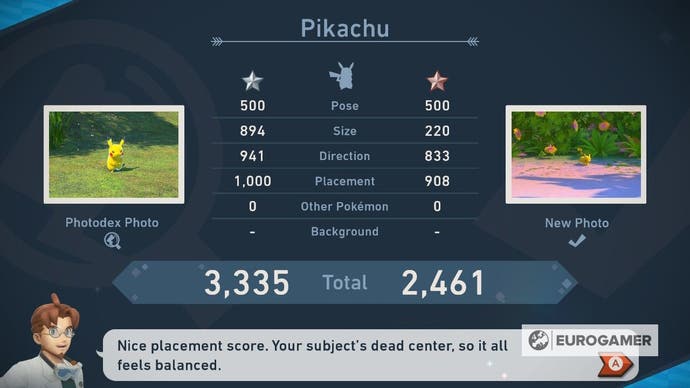
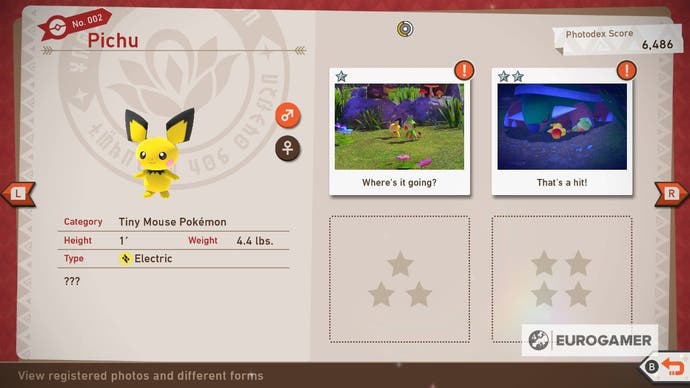
Sometimes you may see a Pokémon act in a certain way, but not have the time to capture it on camera. Instead, you'll be left to figure out whether this action occurs naturally or if you need to, shall we say, persuade the Pokémon to act accordingly. Luckily, you'll unlock a variety of items which help you crumple the ethics of nature photography into a ball and throw them in the bin or, more accurately, at a Pokémon.
Sure a picture of a Dodrio eating an apple - sorry, Fluffruit - is nice, but what happens if you throw one at its heads?
A better photo opportunity that's what.
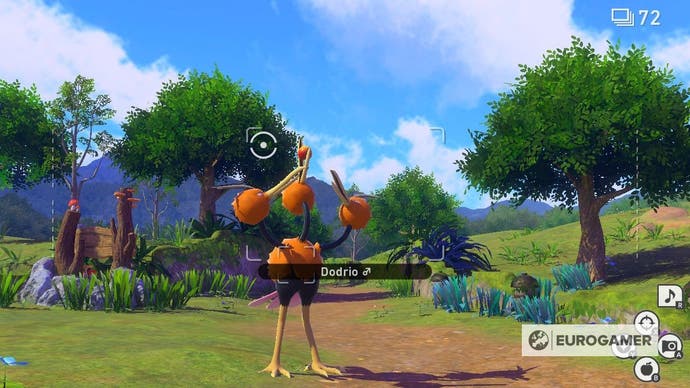
Aside from the sweet but dangerous Fluffruit, there's the Melody Player, which may encourage a Pokémon to dance. The more interesting changes in Pokémon behaviour, however, occur through the use of Illumina Orbs.
Illumina Orbs are gradually unlocked as you learn more about Illumina Pokémon - the Lental region's own flavour of 'Pokémon but different' like Mega and Gigantamax Pokémon before them. They are, as the name suggests, Pokémon which glow and the game centres around Professor Mirror's research in this phenomena. This plotline is, unsurprisingly, thin and serves more as a connective tissue for unlocking the various courses in New Pokémon Snap. Hitting a Crystabloom flower or a Pokémon with an Illumina Orb may cause it to perform a special behaviour, which will grant your photograph a higher star category.
Illumina Orbs don't, however, affect every Pokémon you encounter, so it does involve an amount of trial and error to discover which creatures are worth targeting. Judging the distance between your target and the pool can also be difficult when throwing both Illumina Orbs and Fluffruit. It's easy to under or overshoot your target and, since you're constantly moving, there are occasions when your hit will land, but you'll miss the resulting action as it moves out of sight. This can quickly become frustrating as you're left to restart the course in the hopes you'll be able to both make the shot and take the photo in time.
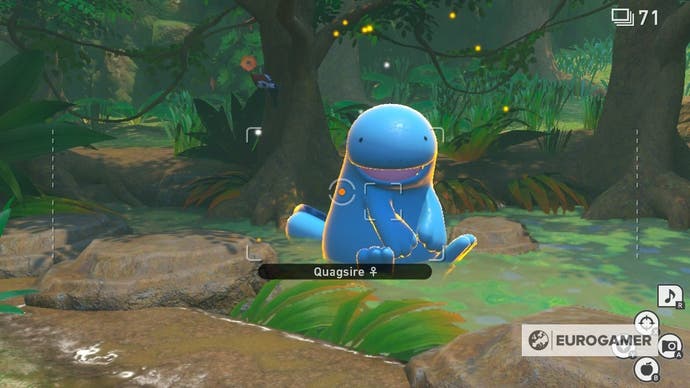
As your knowledge of Pokémon behaviour and the Lental region grows, you'll ultise this experience to complete the LenTalk requests. These tasks unlock naturally as you explore the courses and, aside from terrorising Pokémon with Fluffruit, are the best part of New Pokémon Snap. The hints are detailed enough to give you a starting point, but contain enough ambiguity to still provide a challenge. Some require a keen eye and awareness of your surroundings, while others involve carefully influencing Pokémon with a variety of items, but they always need a quick finger on the camera trigger. The ability to tackle the requests in any order you please prevents them from feeling like a chore, especially since you can complete multiple tasks in one course run. Their inclusion does remove some of the game's mystery - I'll never forget forcing a Charmeleon to evolve by knocking it into a pool of lava in Pokémon Snap - but they do make returning to past courses more worthwhile.

While New Pokémon Snap relies on the foundation built by the original game, it has managed to develop these mechanics to create a longer, more fulfilling, experience. An ever-present charm runs throughout the game, from how well the Pokémon models are rendered to the photo editing feature, which allows you to add some pizzazz to your favourite pictures. Admittedly, it is targeted more towards the already dedicated Pokémon fan rather than a newcomer. If you're willing to take the plunge though, you'll discover a relaxing, yet slightly strange, game perfect for Pokémon photography marathons.
